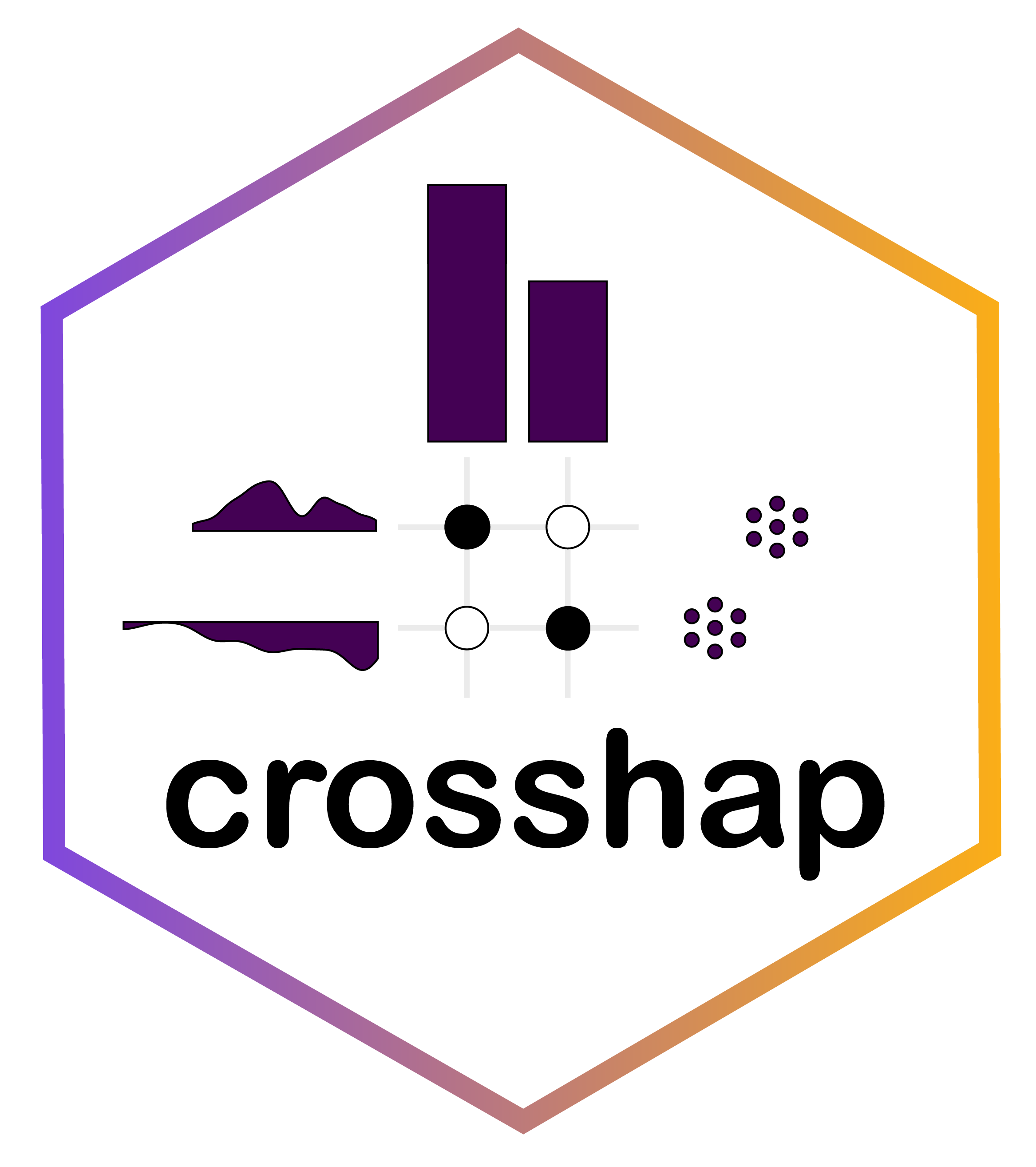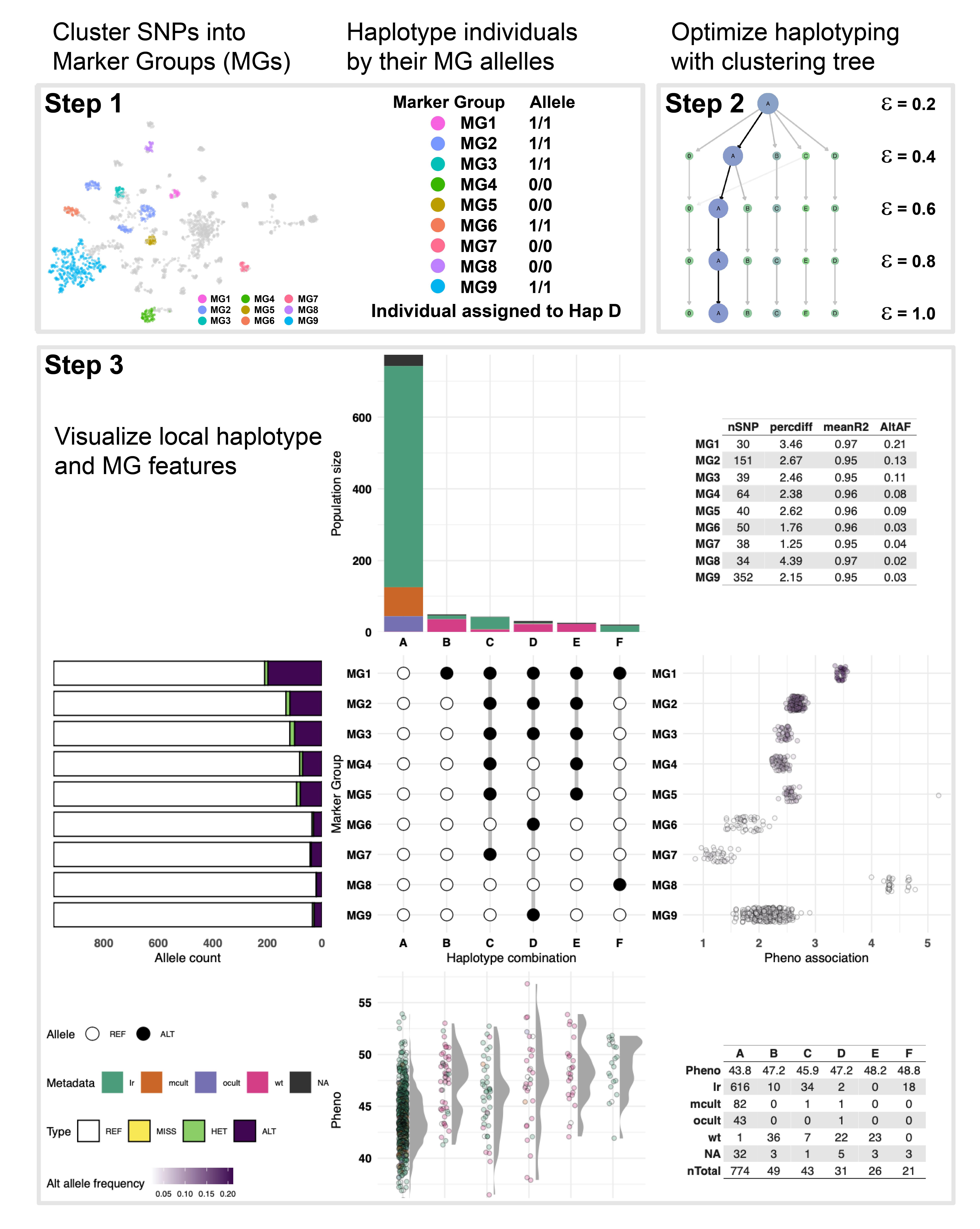
crosshap is an LD-based local haplotype analysis and visualization tool.
Given a genomic variant data for a region of interest, crosshap performs LD-based local haplotyping. Tightly linked variants are clustered into Marker Groups (MGs), and individuals are grouped into local haplotypes by shared allelic combinations of MGs. Following this, crosshap provides a range of visualization options to examine relevant characteristics of the linked Marker Groups and local haplotypes.
crosshap was originally designed to explore local haplotype patterns that may underlie phenotypic variability in quantitative trait locus (QTL) regions. It is ideally suited to complement and follow-up GWAS results (takes same inputs). crosshap equips users with the tools to explain why a region reported a GWAS hit, what variants are causal candidates, what populations are they present/absent in, and what the features are of those populations.
Alternatively, crosshap can simply be a tool to identify patterns of linkage among local variants, and to classify individuals based on shared haplotypes.
Note: crosshap is designed for in-depth, user-driven analysis of inheritance patterns in specific regions of interest, not genome-wide scans.
crosshap is available on CRAN:
For the latest features, you can install the development version of crosshap from GitHub with:
In short, a typical crosshap analysis workflow involves the following steps. For a detailed explanation and walk through, see our Getting started vignette.

From here you can examine haplotype and Marker Group features from the visualization, and export relevant information from the haplotype object.
HapObject$Haplotypes_MGmin30_E0.6$Indfile
HapObject$Haplotypes_MGmin30_E0.6$Hapfile
HapObject$Haplotypes_MGmin30_E0.6$VarfileFor technical queries feel free to contact me: jacob.marsh@unc.edu . Please contact Prof. David Edwards for all other queries: dave.edwards@uwa.edu.au .